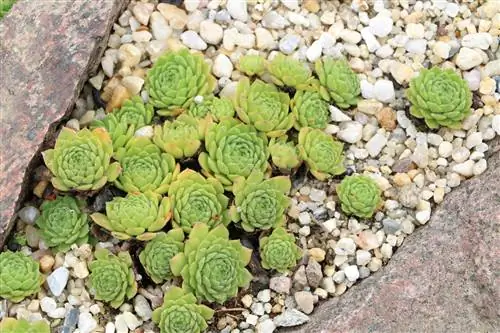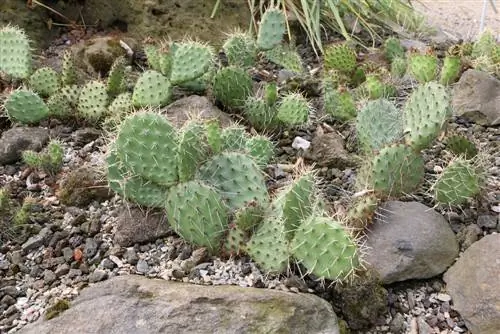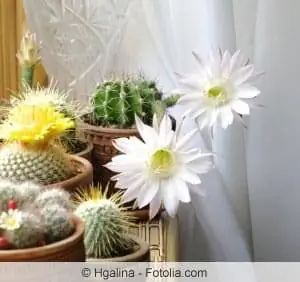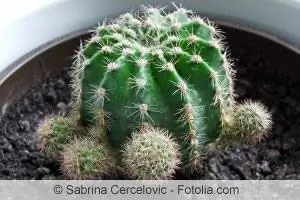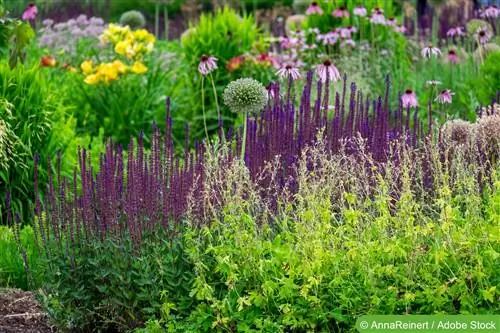- Author admin [email protected].
- Public 2023-12-17 03:39.
- Last modified 2025-06-01 06:48.
Juicy green or bright red - the colors of the Sempervivum species are diverse and can be wonderfully combined with each other. In addition, the houseleek is surprisingly easy to care for and can be cultivated with very little effort. However, in order for it to thrive and develop its beauty, a few points must be met. Interested hobby gardeners can find out what these are in the following. And the most suitable species are also revealed.
Popular species
The following overview shows only a small selection of houseleek species that are particularly suitable for the garden or that stand out due to their appearance in beds and containers.
- Sempervivum tectorum, also known as houseleek and roof houseleek
- Sempervivum funckii aqualiense
- Sempervivum grandiflorum or large-flowered houseleek
- Sempervivum arachnoideum, also known as cobweb houseleek
- Sempervivum montanum or mountain houseleek
- Sempervivum dolomiticum or Dolomite houseleek
- Sempervivum calcareum better known as lime houseleek
- Sempervivum christii
- Sempervivum gillianii
- Sempervivum heuffelii or Balkan Housewort
Sempervivum tectorum or real houseleek produces flowers up to 60 cm high and is particularly indestructible. Sempervivum funckii aqualiense impresses with its small, delicate growth and the fresh green color of the rather narrow leaves. Sempervivum grandiflorum or large-flowered houseleek has dark leaves and bright, large flowers. The contrast of the quite large growing species is decorative and attractive. Sempervivum arachnoideum or cobweb houseleek forms spherical rosettes that appear covered with cobwebs due to their light tips and hairs. This doesn't sound particularly appealing, but it is very eye-catching and decorative. Sempervivum montanum remains quite small, which makes the flowers even more noticeable. Sempervivum dolomiticum or Dolomite houseleek is one of the rarer types of houseleek and reaches a height of up to 20 cm. Sempervivum calcareum or lime houseleek is strikingly colored and marked, making it a great eye-catcher in the rock garden. Sempervivum christii has particularly beautiful flowers and develops smaller rosettes that are close together. Due to its decorative appearance, this houseleek species can also stand well on its own. Sempervivum gillianii is a small species. The rosettes are just up to 6 cm in diameter. This makes this type of houseleek appear particularly delicate. Sempervivum heuffelli or Balkan Housewort is lively, in the truest sense of the word. The rosettes reach a diameter of 18 cm. In addition to these, there are now countless hybrids and other breeds available on the market, all of which have their own unique appeal. So it's worth taking a look around here.
soft rain or tap water. Waterlogging must not occur at any time, as the houseleek has a hard time forgiving it and can quickly suffer from it. It is therefore important to ensure that the moisture drains away sufficiently, especially after watering.
Fertilize
If the soil has been prepared with horn shavings or another organic fertilizer or if fresh soil has been used, further fertilization can easily be dispensed with. Especially in beds, the houseleek obtains the nutrients it needs from rotting plant parts and microorganisms in the soil. Further fertilization is therefore not necessary here. Different in the bucket. With this form of culture, the houseleek has fewer reserves available in the substrate. From the second year onwards, a small amount of fertilizer should be added in spring. An organic agent is suitable, such as horn shavings or meal and compost. Alternatively, you can also water with plant manure or pond water or use a complete liquid fertilizer. The dose should be very small. If fertilizer is missed in the spring, it can be made up in the summer. From September onwards, the additional nutrient supply should be postponed until the following year in order not to disrupt the preparation for the plants' winter dormancy.
Propagation
The houseleek reproduces on its own. On the one hand, it sows itself after flowering, and on the other hand, the succulent produces daughter rosettes. If you want to propagate a particularly beautiful specimen, you just have to be patient. If there are smaller plants in the area, they can simply be dug up and planted in the desired location.
Tip:
If clumps have formed, they can be dug up and divided. This measure additionally stimulates the plant's own reproduction.
Wintering
The houseleek is hardy and can do without additional protection during the frosty months. It is only advisable to insulate against frost when overwintering in very small planters. This can be done with garden fleece or plant covers that shield the pot from the outside. A piece of Styrofoam is recommended as a base. Alternatively, the Sempervivum can also be overwintered indoors, where it is positioned in a bright, frost-free location. Such measures are not necessary in the bed, even if it is a very exposed area.
Blend
After flowering, some of the rosettes on the houseleek die, this is completely normal and nothing to worry about. It is not necessary for the he alth of the plant to remove them. If you are visually bothered by this, it is better to pluck the dried parts of the plant with a strong, short tug rather than cutting them off. This makes the removal more thorough. Cutting is also possible.
Conclusion of the editors
The houseleek is an easy-care plant that rarely requires attention. Sempervivum is an enrichment, especially in larger rock gardens or for uncomplicated gardens. The variety of species and different tones bring variety and make it even easier to design an entire bed with houseleeks.
What you should know about houseleeks in brief
Profile
- Species/Family: Succulent, belongs to the Crassulaceae family
- Care effort: low, easy to care for and completely undemanding
- Flowering time: June to July with small star-shaped flowers in pink, red, yellow or white in umbels; Umbels sit on upright flower stalks
- Foliage: evergreen; oval, pointed and fleshy leaves arranged symmetrically in rosettes; Depending on the variety, the leaves can be light to black-green, red, brown and also covered with silvery hairs; the leaf color is most intense in spring
- Growth: ground cover; flat, depending on the variety, wide or small bud-like leaf rosettes, spreads like a cushion
- Height: 5 to 10 cm
- Location: fully sunny, warm and dry; nutrient-poor, permeable, sandy and dry soil; reacts sensitively to waterlogging
- Planting time: any time as long as the ground is not frozen
- Cut: no cut necessary
- Partners: Cat's Paw, Bearded Iris, Sedum and Saxifrage species, Thyme; very nice as a combination of different varieties
- Propagation: Daughter rosettes can be separated from spring to summer and simply placed in moist soil to root; also spreads on its own
- Overwintering: hardy, but heavily hairy varieties should be protected from winter wetness
- Problems: does not tolerate waterlogging
Special features
- also called roofroot
- Hybrids are breeds, the species can be found naturally in the mountainous regions of Europe and Asia
- if the plant gets rain every now and then they are happy, watering is not necessary
- fits in the rock garden, loves even the smallest wall joints with little soil or the roof garden
- perfect for gardeners with little time, as the plant hardly needs any nutrients, takes up little space and tolerates drought well
Varieties (selection)
- `Black Prince: Striking black-purple leaves with green tips
- `Noir: As the name of the interesting variety suggests, it has black-green leaves that are decorated with red tips as a special extra

